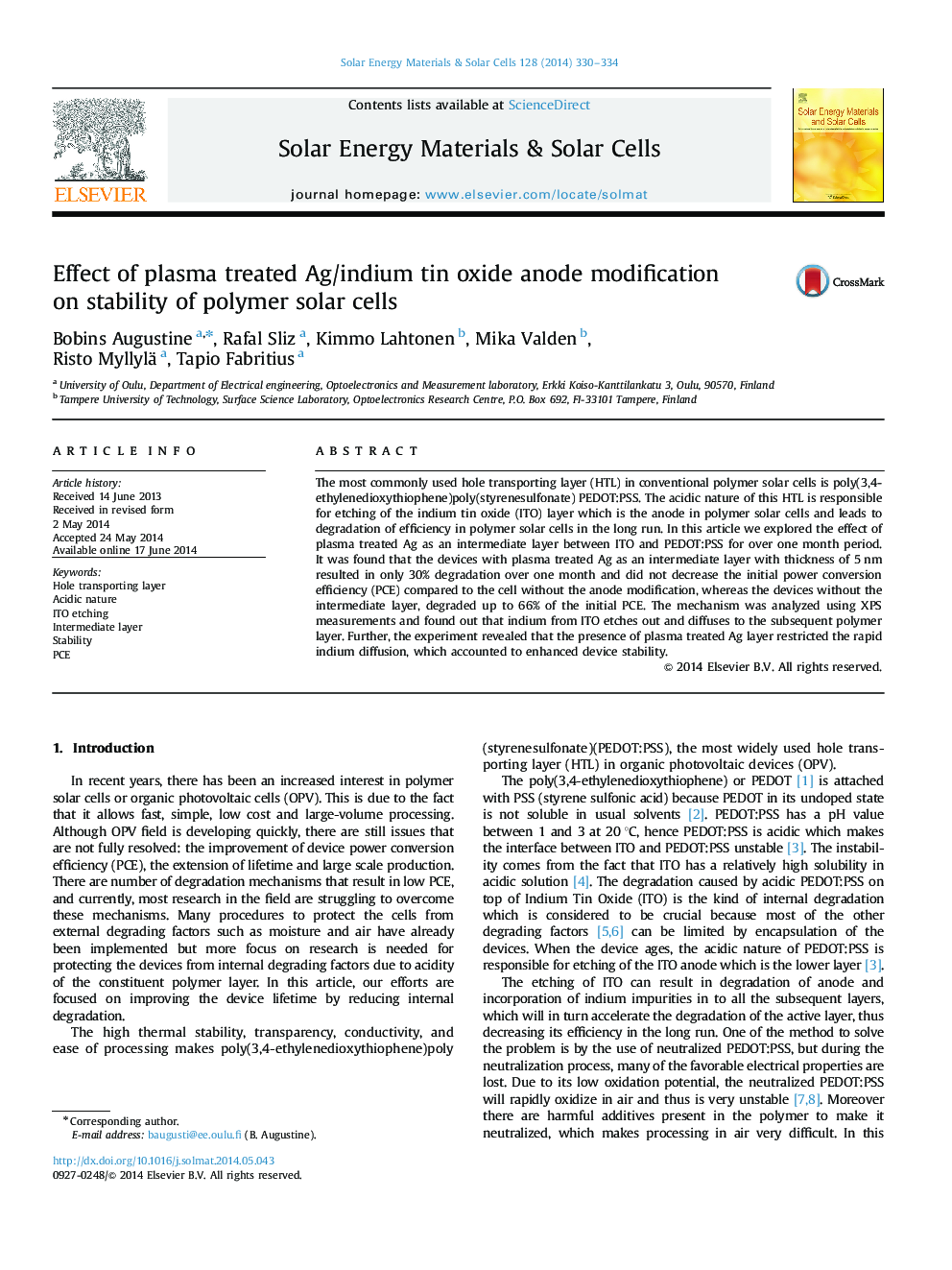| کد مقاله | کد نشریه | سال انتشار | مقاله انگلیسی | نسخه تمام متن |
|---|---|---|---|---|
| 78006 | 49312 | 2014 | 5 صفحه PDF | دانلود رایگان |
• Simple and robust method to enhance the stability of polymer solar cells.
• The internal degradation caused by the acidic nature of PEDOT:PSS is reduced by the plasma treated Ag layer.
• Effect of plasma treated Ag layer on device performance is analyzed.
The most commonly used hole transporting layer (HTL) in conventional polymer solar cells is poly(3,4-ethylenedioxythiophene)poly(styrenesulfonate) PEDOT:PSS. The acidic nature of this HTL is responsible for etching of the indium tin oxide (ITO) layer which is the anode in polymer solar cells and leads to degradation of efficiency in polymer solar cells in the long run. In this article we explored the effect of plasma treated Ag as an intermediate layer between ITO and PEDOT:PSS for over one month period. It was found that the devices with plasma treated Ag as an intermediate layer with thickness of 5 nm resulted in only 30% degradation over one month and did not decrease the initial power conversion efficiency (PCE) compared to the cell without the anode modification, whereas the devices without the intermediate layer, degraded up to 66% of the initial PCE. The mechanism was analyzed using XPS measurements and found out that indium from ITO etches out and diffuses to the subsequent polymer layer. Further, the experiment revealed that the presence of plasma treated Ag layer restricted the rapid indium diffusion, which accounted to enhanced device stability.
Journal: Solar Energy Materials and Solar Cells - Volume 128, September 2014, Pages 330–334
